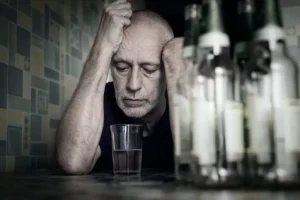When judged by today’s standards of randomized controlled trials, or a properly controlled and systematically replicated single-case study, most of the early autism/LSD studies were so flawed as to be little better than anecdotal. High-dose psilocybin showed a large effect size and a statistically significant advantage over low-dose psilocybin for reducing clinician-assessed and self-report measures of depression and anxiety. In addition to large effect size reductions in depression and anxiety, high-dose psilocybin produced significantly greater ratings of positive persisting effects on attitudes about life and self, social effects, and spirituality. Consistent with the positive changes, high-dose experiences were also rated as producing significantly greater personal meaning, spiritual significance, and increased well-being or life satisfaction than the low-dose experiences, with these differences sustained at 6 months. Furthermore, the immediate postsession mystical experience score was linearly correlated with therapeutic efficacy.
Depression and Anxiety
LSD is typically taken in a tablet or a liquid form that can be taken with certain types of ingestible papers. This view is consistent with the information integration theory of consciousness (Tononi, 2004), which proposes that the thalamus and thalamocortical system are psychedelics addictive play a key role in integrating information and ensuing consciousness. Psychedelics may alter thalamocortical transmission by stimulating 5-HT2A receptors located in several key components of the CSTC loops (Vollenweider et al., 2007; Geyer and Vollenweider, 2008).
The FDA says ecstasy is a ‘breakthrough’ drug for PTSD patients
Since the introduction of LSD into popular culture, there has been a great deal of speculation as to whether psychedelics might acutely improve creativity. Sessa (2008) wrote an essay about much of the thinking and reported on creativity from that early period of time. After enrollment and assessment of baseline measures and before the first psilocybin session, each participant met with study guides on two or more occasions to establish rapport and prepare the participant for the psilocybin sessions. After each psilocybin session, participants met with the study guides within a day or two after the session to discuss their experiences.
Hallucinogen-Induced Persistent Perception Disorder
Other studies have documented much lower prevalence rates of the disorder, some as low as 1/50,000 (Grinspoon and Bakalar, 1979). Those with a predisposition towards psychotic illnesses (i.e. personal or family history of schizophrenia or bipolar disorder) are generally excluded from clinical treatment with psychedelics (Johnson et al., 2008). With such screening, no psychotic episodes have been documented in modern clinical trials to the best of our knowledge. However, their potential range of psychological and psychiatric, as well as physiological risks remains to be fully understood. Table 1 provides an overview of key potential adverse effects of psychedelics, focusing on those which still loom large in public perceptions.
A. General Issues of Safety and Mental Health in Psychedelic Users
- Alcoholics Anonymous (AA), with 2.1 million members worldwide, has assisted people to regain control over alcohol use since 1935.
- After we swallow and drink water, we put our hands together in a prayer position, look at each other, and each of us says something to the effect of, “I will take care of you, me, and us.” During our trip, we stay within earshot of each other and don’t go online.
- Their study was the first to investigate the effects of a psychedelic on cortical neurophysiology in awake animals.
- Somatic effects vary but are relatively insignificant, even at doses that elicit powerful psychologic effects.
- He and his colleagues at the new center plan to conduct a double-blind, placebo-controlled study—the gold standard for medical investigations—in the future.
- Although the author connected her visual problems with her prior LSD use, it is not at all clear from the report that her LSD use was the cause of her visual problem.
In this week’s Psychedelic news roundup, we discuss fresh data supporting the use of psilocybin to treat alcohol use disorder (AUD). Other news includes what some scientists believe may be the key to understanding psychedelic mechanisms of action, new support for psychedelic medicine at the University of New Mexico (UNM) and more. If the FDA denies approval of Lykos’ MDMA-assisted therapy, the company could conduct revised studies and reapply. FDA draft guidance posted in June 2023 provides a potential framework on how to overcome expectancy bias and the nocebo effect by employing an active placebo which could be a substance that also has mind-altering effects but no expected therapeutic benefit. This was reiterated during a virtual public meeting, “Advancing Psychedelic Clinical Study Design,” organized by the Reagan-Udall Foundation for the FDA in the winter of 2024.
C. Psychedelics Can Engender Ecstatic States with Persistent Positive Personality Change
Participants were instructed by text appearing at the beginning of each block to press as rapidly as possible a response button when words of one valence category were presented (go cues) and withhold responses to words of another valence category (no-go cues). In the EEG analysis, event-related potentials were referenced to the average reference before N2 and P300 amplitudes were quantified against baseline activity. The rabbit has not been widely used as an animal model to study the effects of psychedelics, but a number of experiments in this species have been carried out over the past decade, primarily in the laboratory of the late John A. Harvey. These studies have examined the rabbit head-bobbing response, as well as associative learning. They found that daily injections of the 5-HT2A agonists DOI, LSD, and the antagonist 2-bromo-lysergic acid-N,N-diethylamide (BOL) led to decreased cortical 5-HT2A receptor density but had no effect on density of cortical 5-HT2C receptors.
F. Possible Role of Other Receptors
- Many users describe a sense of expanded consciousness or a feeling of connection to something greater than themselves.
- Consistent with this reasoning, adding serotonin to serum-free media for the culturing resulted in 5-HT2A–YFP internalization in WT MEFs.
- Among people aged 12 or older in 2021, 2.6% (or about 7.4 million people) reported using hallucinogens in the past 12 months.
According to the Journal of the American Medical Association, 37% of alcohol abusers have at least one serious mental illness. Among people dying by suicide, AUD is the second-most-common mental disorder, involved in 1 in 4 suicide deaths. Rather than wait for people to “bottom out,” we need to intervene much sooner with regular alcohol screening and identification of pre-addiction. Further research on neuromodulation (TMS), ketamine, psychedelics, and GLP-1 receptor agonists may increase https://ecosoberhouse.com/ patient and physician interest in AUD treatment. Psychedelic-assisted treatment involves the use of psychedelic substances alongside traditional talk therapy for a wide range of mental health issues, including PTSD, treatment-resistant depression, severe anxiety, and substance abuse. There appears to be a broad consensus, however, that psychedelics are worthy of research in disease areas with a significant amount of unmet need, in particular, PTSD and treatment-resistant depression.






